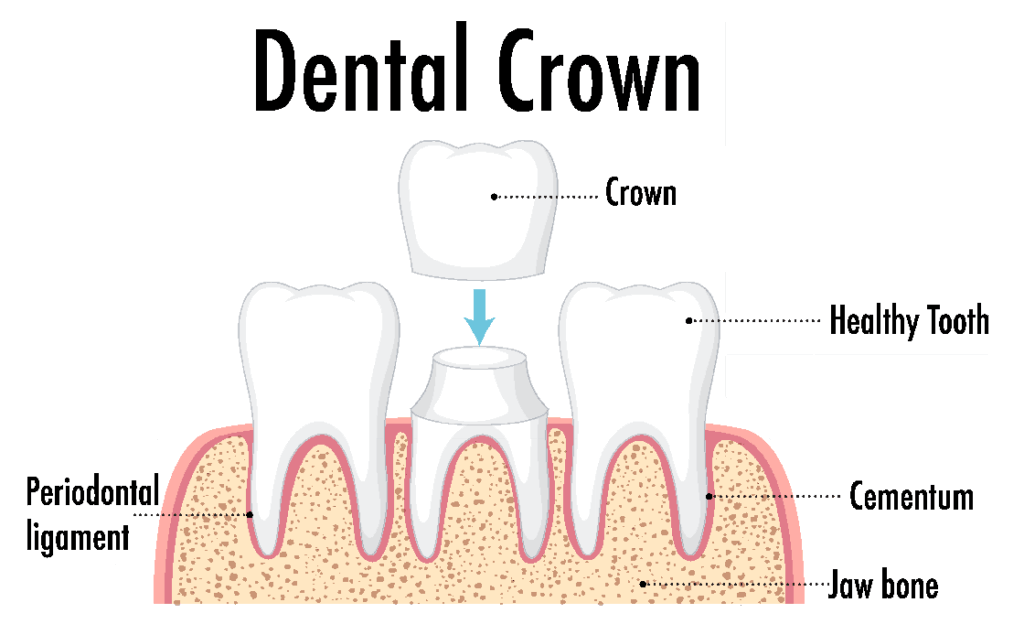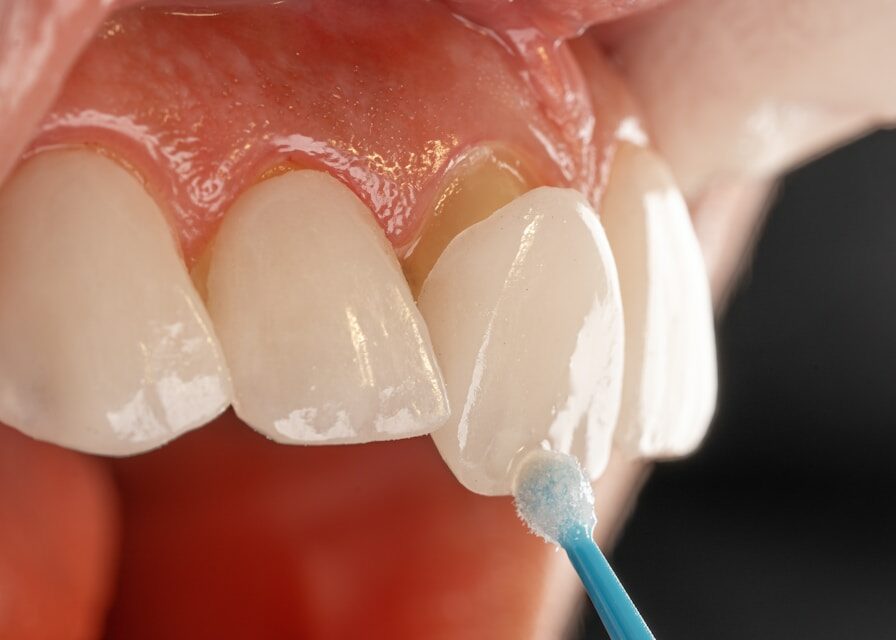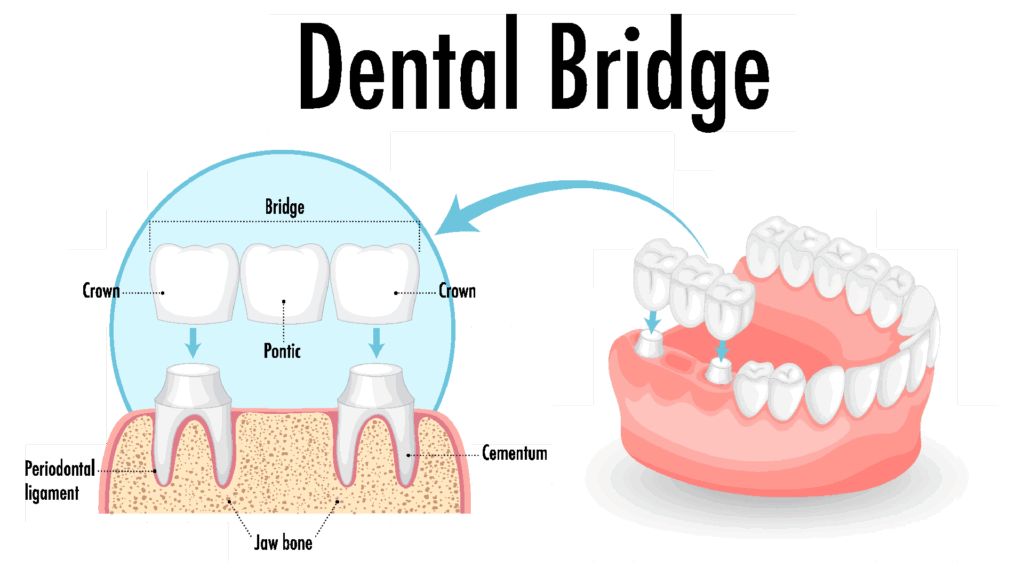Tooth-colored composite fillings are made from a blend of resin and fine glass particles that can be customized to match the natural color of your teeth. These fillings are often used for aesthetic reasons and are especially popular for restoring teeth in visible areas. These high quality and durable restorations have replaced the use of the older style amalgam (silver) fillings and can restore teeth to their original look and function.

Dental crowns and veneers are two popular solutions for enhancing your smile and restoring the functionality of your teeth. Both options can help address aesthetic concerns such as discoloration, chips, cracks, and misalignment, but they serve different purposes.
As time passes, our teeth naturally weaken, making them more prone to issues like decay, cracks, and discoloration. Crowns are often needed when a tooth is severely decayed, damaged below the gum line, or cracked, as a filling or bonding may not be sufficient to resolve the issue. A dental crown is a cap that completely covers the damaged or weakened tooth and can restore the tooth’s strength, size, shape, and appearance.
Crowns can be crafted from various materials, including zirconia, porcelain, porcelain fused to metal, or gold. For the most natural appearance, a zirconia or porcelain crown is ideal because it can be color-matched to blend seamlessly with your other teeth.
Getting a crown typically requires two appointments. During the first visit, the affected tooth will be reshaped to allow the crown to fit properly. You’ll be given a local anesthetic to ensure comfort throughout the process. After reshaping, an impression of your tooth and surrounding teeth will be taken, which will be sent to a lab to create your custom crown. Your dentist may also take photos to match the crown’s shape and shade to your natural teeth. In the meantime, a temporary crown will be placed to protect the tooth.
After about three weeks, you’ll return for your second appointment, where the permanent crown will be fitted. The tooth will be numbed again, and the crown will be securely cemented into place. Once completed, your smile will be restored to its natural form. Crowns are long-lasting and can typically endure for 10 to 15 years or longer with proper care, including regular brushing and flossing. If you’re interested in learning more about how crowns can enhance your smile, contact us today.

Veneers offer an effective solution for transforming the appearance of your smile. These thin, custom-made ceramic shells are designed to cover the front surface of your teeth, helping to correct a variety of cosmetic concerns such as stains, cracks, gaps, misalignment, chips, and more.
The process of getting veneers typically requires two to three appointments. During the first visit, you and Dr. Duke will discuss your aesthetic goals for your smile. If significant changes are planned, you may even preview a digital or physical mockup of your new smile to ensure you’re happy with the outcome. After finalizing the design, the teeth will be carefully prepared to accommodate the veneers. An impression will then be taken and sent to a specialized dental lab, where your veneers will be crafted.
While your permanent veneers are being made (which usually takes about two weeks), you’ll be provided with temporary veneers. These temporary coverings allow you to experience the look and feel of your new smile, ensuring you’re comfortable with the design before the final version is made. We work with only the highest-quality labs to ensure the best results.
Once the veneers are ready, you’ll return for a fitting. The veneers will be bonded to your teeth, and your new smile will be complete. With proper care, veneers can offer a long-lasting, natural looking solution to enhance your smile for years to come.

Dental bridges offer an effective solution for replacing missing teeth. A dental bridge works by using the surrounding natural teeth as anchors to support a replacement tooth in the gap. Bridges can be made from a variety of materials, including zirconia, porcelain, gold, or metal alloys, ensuring both durability and strength.
A dental bridge typically consists of two crowns placed on the teeth adjacent to the gap, known as abutment teeth, with a replacement tooth (pontic) attached between them to fill the missing space. To begin the process, your dentist will reshape the abutment teeth to create a secure base for the bridge. Once prepared, an impression of the area will be taken and sent to a dental lab, where your custom bridge will be crafted to fit and feel as close to your natural teeth as possible. Once ready, the bridge will be permanently cemented in place.
During the time it takes for your permanent bridge to be created, a temporary bridge will be placed to protect the prepared teeth and maintain the appearance of your smile. Once your final bridge is ready, you’ll return for a follow-up appointment to have it securely attached to the abutment teeth using a strong adhesive.
Proper care and cleaning are essential for maintaining a dental bridge, as it’s attached to your natural teeth and subject to similar issues such as decay and wear. Routine brushing and flossing are important to ensure the longevity of both the bridge and the surrounding teeth. If you’re missing a tooth, replacing it with a dental bridge is highly recommended. Not only does it restore the appearance of your smile, but it also helps prevent potential changes in your bite, jaw alignment, and the shifting of neighboring teeth. Other successful options to replace missing teeth would include tooth implants or partial dentures. Contact us today to learn more about how a dental bridge can enhance your smile and improve your oral health.
